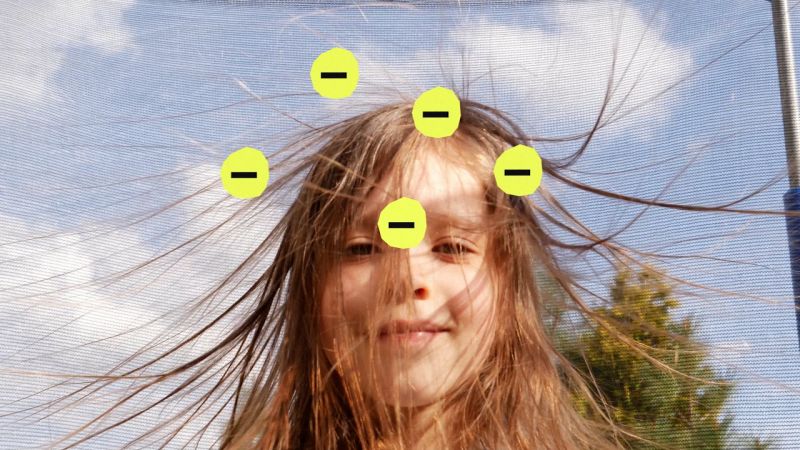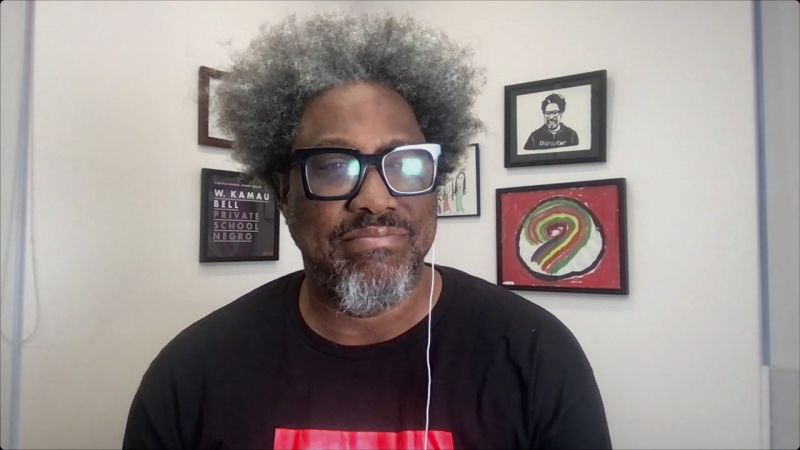Understanding Static Hair: A Scientific Explanation

Table of Contents
Understanding Static Hair: A Scientific Explanation
Static cling, that annoying phenomenon that makes your hair stand on end, is a surprisingly complex scientific process rooted in basic physics. We've all experienced it—the sudden shock of a doorknob, the frustrating flyaway strands after brushing your hair, or the clinging clothes after a tumble in the dryer. But understanding the science behind static electricity clarifies why this happens and offers some ways to mitigate the frizz.
The root cause of static hair lies in the imbalance of electrical charges. Atoms are composed of protons (positively charged), electrons (negatively charged), and neutrons (no charge). Normally, the positive and negative charges within an atom balance. However, certain materials, like hair, easily lose or gain electrons. This process is called triboelectric charging.
When two materials are rubbed together, such as a hairbrush against hair, electrons transfer from one material to the other. The material that loses electrons becomes positively charged, while the material that gains electrons becomes negatively charged. Hair, particularly dry hair, tends to lose electrons relatively easily, becoming positively charged.
The role of humidity is crucial. In dry conditions, there are fewer water molecules in the air to conduct electrons, preventing the dissipation of static charge buildup. This is why static electricity is more prevalent during winter months or in arid climates. Conversely, humid air acts as a conductor, facilitating the flow of electrons and reducing static charge accumulation.
The strength of the static charge depends on several factors: the materials involved (their position in the triboelectric series, which ranks materials according to their tendency to gain or lose electrons), the force and duration of friction, and the ambient humidity. Hair strands, having become positively charged, repel each other due to like charges repelling, leading to that familiar "flyaway" effect.
The attraction between charged hair and other objects, such as clothing or a plastic comb, is also due to the electrostatic force. The positively charged hair is attracted to negatively charged objects. This is why your hair might stick to your sweater or cling to a balloon.
Combating static hair involves strategies designed to neutralize the charge imbalance:
- Increasing humidity: Using a humidifier can add moisture to the air, making it easier for electrons to flow and neutralize charges.
- Using anti-static sprays or fabric softeners: These products often contain compounds that help to neutralize static charges or improve conductivity.
- Choosing the right hairbrush: Materials like natural boar bristle brushes are less likely to generate static electricity compared to plastic brushes.
- Wearing different fabrics: Natural fibers tend to generate less static than synthetic materials.
- Changing your hairstyle: Hair tied up or styled in a way that reduces friction can also lessen static.
Understanding the physics behind static hair helps to demystify this common everyday experience. By understanding the roles of triboelectric charging, humidity, and charge neutralization, we can better understand and manage the often annoying phenomenon of static cling. Future research might focus on developing more effective anti-static materials and techniques, further improving our ability to tame our unruly hair.

Featured Posts
-
 Agency Layoffs And Shutdown Looming Congress Focused On Tax Cuts
Feb 25, 2025
Agency Layoffs And Shutdown Looming Congress Focused On Tax Cuts
Feb 25, 2025 -
 The Women In Luigi Mangiones Corner A Legal Battle
Feb 25, 2025
The Women In Luigi Mangiones Corner A Legal Battle
Feb 25, 2025 -
 Pope Francis Sleeps Peacefully Despite Grave Concerns Over His Health
Feb 25, 2025
Pope Francis Sleeps Peacefully Despite Grave Concerns Over His Health
Feb 25, 2025 -
 Authorities Investigate Link Between Police Officers Murder And Hospital Hostage Situation
Feb 25, 2025
Authorities Investigate Link Between Police Officers Murder And Hospital Hostage Situation
Feb 25, 2025 -
 Solidarity For Luigi Mangione Key Women In His Legal Battle
Feb 25, 2025
Solidarity For Luigi Mangione Key Women In His Legal Battle
Feb 25, 2025
Latest Posts
-
 Luton Shooting Man Confesses To Triple Murder Of Mother And Siblings
Feb 26, 2025
Luton Shooting Man Confesses To Triple Murder Of Mother And Siblings
Feb 26, 2025 -
 Controversial Kennedy Center Gig W Kamau Bells Explanation
Feb 26, 2025
Controversial Kennedy Center Gig W Kamau Bells Explanation
Feb 26, 2025 -
 Atlanta Bound Delta Flight Diverted Following Haze Report
Feb 26, 2025
Atlanta Bound Delta Flight Diverted Following Haze Report
Feb 26, 2025 -
 Macron And Trumps Meeting Will It Reassure Europe About Us Commitment
Feb 26, 2025
Macron And Trumps Meeting Will It Reassure Europe About Us Commitment
Feb 26, 2025 -
 Marked For Assassination Prosecutor Faces Deadly Threat From South American Crime Syndicate
Feb 26, 2025
Marked For Assassination Prosecutor Faces Deadly Threat From South American Crime Syndicate
Feb 26, 2025
